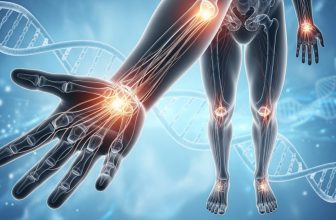
Surgery for Dupuytren’s: 5 Facts What You Need to Know About Advanced Treatment Options
Surgery for Dupuytren’s: What You Need to Know About Advanced Treatment Options
Introduction
For over a century, surgery for Dupuytren’s contracture has been the gold standard for advanced cases. While less-invasive options such as needle aponeurotomy and collagenase injections exist, open surgery remains the most effective solution when cords are dense, nodules are significant, or joints are already fixed. Understanding surgical options, recovery, and outcomes can help patients make informed decisions for long-term hand health.
Types of Surgery for Dupuytren’s
-
Limited Fasciectomy
This procedure removes only the diseased fascia while preserving healthy tissue. Limited fasciectomy is often preferred when contractures are moderate and localized. Patients typically experience improved finger extension and grip with a relatively shorter recovery period. -
Dermofasciectomy
Dermofasciectomy removes both the fascia and overlying skin, followed by a skin graft. While recovery takes longer, this technique significantly lowers recurrence rates and is recommended for severe or recurrent cases. -
Open Fasciotomy
Open fasciotomy involves cutting the cord without removing it. This less-extensive surgery is suitable for patients who may not tolerate longer operations or extensive tissue removal. It can provide functional improvement but carries a higher chance of recurrence compared to fasciectomy.
Benefits of Surgery for Dupuytren’s
Surgical intervention restores finger extension, grip strength, and daily function for advanced contractures. Compared to non-surgical options, surgery offers longer-lasting results, particularly when combined with post-operative therapy. Patients often regain independence in activities like writing, cooking, or gripping objects.
(Johns Hopkins Medicine)
Risks and Complications
While effective, surgery for Dupuytren’s carries potential risks, including:
-
Wound-healing delays
-
Nerve or tendon injury
-
Infection
-
Post-operative stiffness
Certain health factors, such as diabetes and smoking, increase the likelihood of complications. Recurrence rates vary from 12% to 40%, depending on the technique and follow-up care.
Recovery and Rehabilitation
Early movement after surgery is essential. Patients typically begin gentle stretching within days of the procedure and often use a night splint to maintain finger alignment. Occupational therapy is highly recommended to reduce swelling, minimize scarring, and optimize mobility. Consistent exercises and follow-up care are critical to achieving the best long-term outcomes.
What the Science Says
Research shows that dermofasciectomy offers the lowest recurrence rates but requires a longer healing period, whereas limited fasciectomy balances recovery speed with durable results. Ultimately, the surgeon’s experience and adherence to post-operative rehabilitation protocols are key determinants of success.
(NIH)
Key Takeaways: Understanding Surgery for Dupuytren’s
-
Gold standard for advanced contractures:
Surgery remains the most reliable option for severe Dupuytren’s contracture, particularly when cords are dense, joints are fixed, or daily hand function is significantly impaired. Unlike less-invasive procedures, surgical correction addresses the root of the problem and provides long-term improvement in finger extension and grip strength. -
Choosing the right surgical technique:
Different techniques are available depending on the severity and location of the contracture. Limited fasciectomy targets only diseased fascia, preserving healthy tissue for a quicker recovery. Dermofasciectomy removes both fascia and skin, lowering recurrence but requiring longer healing. Open fasciotomy is suitable for patients who cannot tolerate extensive surgery but may have higher recurrence risk. Your surgeon will recommend the most appropriate approach based on hand assessment, medical history, and lifestyle needs. -
Recurrence rates and management:
Recurrence can happen after any procedure, but dermofasciectomy generally shows the lowest recurrence rates. Factors such as post-operative care, therapy adherence, and overall health play a crucial role in maintaining results. Patients with diabetes, poor circulation, or other systemic conditions may need closer monitoring to prevent new contractures from forming. -
Rehabilitation is vital:
Recovery is not just about healing from surgery—it’s about regaining full hand function. Early gentle stretching, use of night splints, and consistent occupational therapy help prevent stiffness and scar tissue formation. Rehabilitation supports optimal finger movement, improves strength, and reduces the likelihood of recurrence. Active participation in your post-operative plan can make the difference between temporary improvement and long-term results. -
Expert care matters:
The skill and experience of the hand surgeon significantly influence outcomes. Choosing a surgeon familiar with Dupuytren’s procedures, who can guide you through pre-operative preparation and post-operative rehabilitation, ensures the best chance of restoring hand function and quality of life. -
Holistic approach improves success:
Surgery works best when combined with attention to overall health. Managing inflammation, controlling chronic conditions like diabetes, avoiding smoking, and maintaining a healthy lifestyle all contribute to faster healing and lower recurrence rates.
Call to Action: Connect with our Dupuytren’s community for support and real-world tips: facebook.com/groups/dupuytrenssolutionsandhealth. Discover my journey in Dupuytren’s Solutions and learn about all treatments at dupuytrenssolutions.com.
Attribution: (CC BY 4.0) Adapted from open-access sources: Khaliq F et al. Dupuytren’s Contracture: A Review of the Literature. 2024; Rodrigues JN et al. Surgery for Dupuytren’s Contracture. 2015; Wong CR et al. Outcomes of Recurrent Dupuytren’s Disease. 2021. For complete references, see Source links.
Legal & Medical Disclaimer: This content is for informational and educational purposes only and is not a substitute for professional medical advice, diagnosis, or treatment. Always consult your healthcare provider about any medical concerns or treatment options. Dupuytren’s Solutions is an educational resource meant to be used alongside, not instead of, professional medical care, and individual results may vary.






